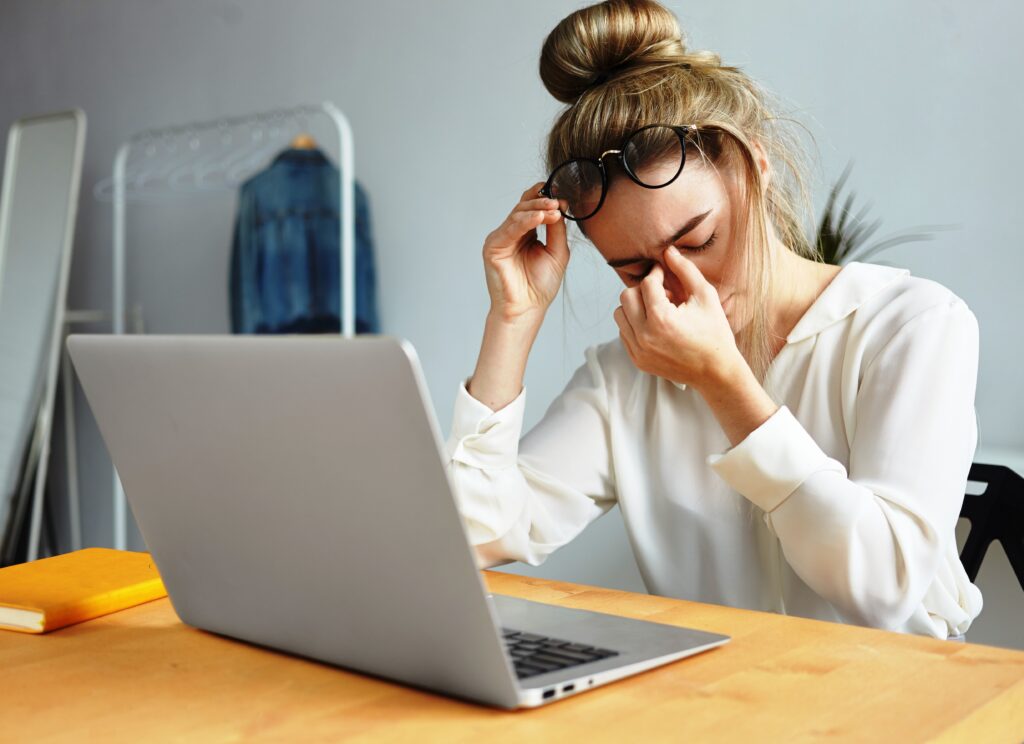
Table of Contents
Overview
In our contemporary, technologically advanced society, eye strain—also known as digital computer vision syndrome—has become a prevalent problem. Many of us suffer from symptoms including dry eyes, headaches, impaired vision, and neck or shoulder pain as a result of our growing reliance on screens for work, communication, and leisure. Fortunately, there are doable methods to reduce pain and preserve improved eye health. We’ll look at seven practical ways to lessen eye strain and enhance your general visual comfort in this post.
Eye strain: what is it?
Fatigue or discomfort in the eyes brought on by prolonged use of digital gadgets, reading, or other activities requiring strong attention is known as eye strain. Chronic eye strain can affect productivity and quality of life, even though it is typically not serious.
Reasons for eye strain
There are several causes of eye strain, including:
Extended Screen Time: Working continuously for hours on a computer, smartphone, or tablet.
Improper lighting: Working under too bright or dim lighting is known as improper lighting.
Poor ergonomics: improper screen placement or posture.
Dry eyes: Reduced blinking rate when using a screen is a sign of dry eyes.
7 Practical Ways to Lessen Eye Strain
1. Adhere to the 20-20-20 Rule
The 20-20-20 rule is one of the easiest and most efficient strategies to lessen eye strain. Look at something 20 feet away for at least 20 seconds every 20 minutes. This lessens eye tiredness brought on by extended screen time by relaxing the eye muscles.
2. Modify the Screen Configuration
You may greatly lessen strain by optimizing your screen settings. Here’s how:
- Contrast and Brightness: Adjust the screen’s brightness to the ambient light level.
- Font Size: Make sure the font size you choose is readable without requiring squinting.
- Blue Light Filters: To lessen eye strain, turn on your device’s night mode or blue light filter.
3. Improve the lighting in your space
An important factor in avoiding eye strain is lighting:
- Avoid Glare: To reduce reflections, use anti-glare screens or adjust your monitor’s posture.
- Ambient Lighting: Make sure there is enough light in the space without it being too much. The best light is natural.
4. Maintain the right posture and distance.
Make sure the distance and angle of your screen are suitable:
- Distance: Place your screen between 20 and 28 inches away from your eyes.
- Height: The screen’s top needs to be at eye level or just below.
- Position: Sit with your arms at a 90-degree angle, feet flat on the floor, and back straight.
5. Make More Blinks
By blinking, you can avoid dry eyes and keep them moist. Make a conscious effort to blink more often while using screens in order to keep your eyes lubricated.
6. Apply eye drops or artificial tears.
Use lubricating eye drops or artificial tears if your dry eyes don’t go away. For advice, speak with an eye care specialist.
7. Practice eye exercises and take regular breaks.
Long-term strain can be avoided with frequent pauses. Try basic eye exercises like these as well:
- Rolling Your Eyes: Roll your eyes slowly in a circle.
- Focus Shifts: Switch between focusing on an object close by and one farther away.
Avoiding children’s eye strains
Children who spend too much time on screens are especially susceptible to eye strain. Set screen time limitations, promote outside play, and instill the 20-20-20 rule in them. It is equally crucial to provide them with an ergonomic arrangement and sufficient illumination.
When to Consult an Ophthalmologist
Although the majority of eye strain instances are treatable, see an eye doctor if you suffer from:
- Symptoms that persist or get worse
- Extreme light sensitivity or double vision
- The above measures did not alleviate eye pain.
An eye specialist can diagnose underlying issues and suggest customized eyewear or therapies.
In conclusion
Eye strain is a common but treatable condition. You can safeguard your eyes and increase your comfort level when using screens by following these seven suggestions. Keep in mind that you should take care of your eyes; therefore, incorporate these techniques into your everyday practice. Visit Your Health Reporter to learn more about how to stay healthy.
Questions and Answers (FAQ’s)
1. What signs of eye strain are present?
Dry eyes, headaches, impaired vision, light sensitivity, and back, shoulder, or neck pain are some of the symptoms.
2. Can eye strain result in long-term harm?
No, eye strain usually doesn’t result in long-term harm, although it can interfere with day-to-day functioning.
3. Do blue-light spectacles work?
Some people may find that wearing blue light glasses lessens eye strain, particularly when using screens at night.
4. How much time should I spend away from screens?
The 20-20-20 rule states that you should look at an object 20 feet away for at least 20 seconds every 20 minutes to take a break.
5. Do kids often get eye strain?
Yes, particularly in light of the rise in digital gadget use and online education. Promote frequent breaks and screen time limits.

